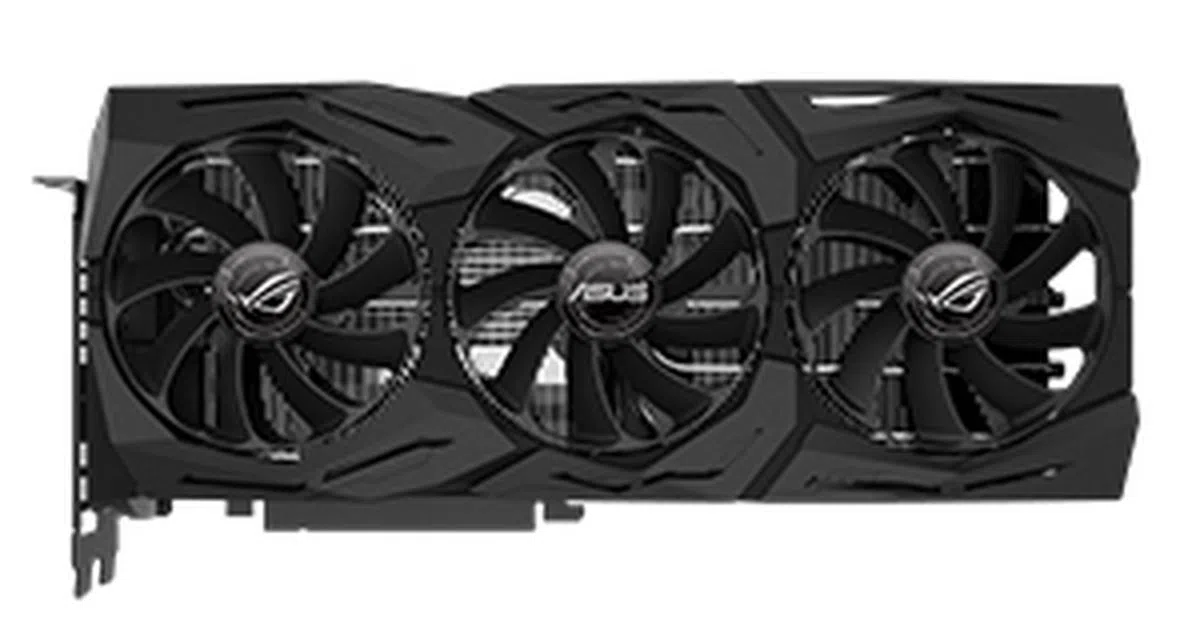NVIDIA GeForce RTX 2080 Super shootout: Which custom card should you buy?
Shopping for a powerful custom-designed graphics card?
Note: This article was first published on 20 November 2019.
Which is the best custom GeForce RTX 2080 Super?
NVIDIA's GeForce RTX 2080 Super is very, very fast, but if you're looking to take things up a notch with factory overclocks and custom cooling solutions, there are plenty of cards out there vying for your money. I'll be looking at the cards from seven different brands today – with so many options and looks available, including new entrant EVGA, you'll probably be able to find one that fits your tastes and budget:
- ASUS ROG Strix GeForce RTX 2080 Super Gaming Advanced
- EVGA GeForce RTX 2080 Super XC Ultra, Overclocked
- GALAX GeForce RTX 2080 Super EX 1-click OC
- Gigabyte GeForce RTX 2080 Super Gaming OC
- MSI GeForce RTX 2080 Super Gaming X Trio
- Palit GeForce RTX 2080 Super White GameRock
- Zotac Gaming GeForce RTX 2080 Super Triple Fan
Before I dive into the results and the individual cards, let me just get one thing out of the way first. Clock speeds don't matter that much, and all the cards produce near-identical results in games. Instead, things like thermal performance and design matter more, so that's what I'll be focusing on. In addition, you'll probably want to pay attention to how much space the cards require, such as whether they're two- or three-slot models and how much clearance you need in your case.
To make that simpler, I've included the dimensions of each card below so you get a clearer picture of how they stack up against one another, at least in terms of size.
Models / Specs | Dimensions (cm) | No. of slots occupied | Power connectors | ||
Length | Height | Thickness | |||
ASUS ROG Strix GeForce RTX 2080 Super Advanced | 29.97 | 13.04 | 5.41 | 2.7 | 2x 8-pin |
EVGA GeForce RTX 2080 Super XC Ultra, Overclocked | 26.98 | 11.12 | 6.81 | 2.75 | 1x 8-pin, 1x 6-pin |
GALAX GeForce RTX 2080 Super EX 1-click OC | 29. 5 | 14.30 | 5.20 | 2 | 1x 8-pin, 1x 6-pin |
Gigabyte GeForce RTX 2080 Super Gaming OC | 28.65 | 11.45 | 5.02 | 2 | 1x 8-pin, 1x 6-pin |
MSI GeForce RTX 2080 Super Gaming X Trio | 32.8 | 14.00 | 5.65 | 2.7 | 2x 8-pin |
Palit GeForce RTX 2080 Super White GameRock | 29.2 | 13.00 | 5.96 | 2.7 | 2x 8-pin |
Zotac Gaming GeForce RTX 2080 Super Triple Fan | 30.8 | 11.30 | 5.70 | 2.5 | 1x 8-pin, 1x 6-pin |
The EVGA card stands out for being one of the thickest cards around (though one of the shortest), while the MSI and Zotac models are one of the longest, requiring over 30cm of space!
But with that out of the way, it's time to take a closer look at what each card offers over the next few pages and how they stack up.
ASUS ROG Strix GeForce RTX 2080 Super Gaming Advanced

Not much has changed coming from the previous generation.
The ASUS ROG Strix GeForce RTX 2080 Super Gaming card is very similar to previous cards I've reviewed from this series. This is a premium card that’s been crammed with nearly everything you could want, and it comes with a couple of unique features that help to improve the overall user experience. However, the cooler design hasn't changed, and you still get three "axial-tech" fans and a faceted shroud with RGB LEDs set into the edges.
This is one of the heaviest cards in this shootout, but it's also one of the most solidly built. The plastic shroud feels really well put-together, and there's an additional metal brace that wraps around the card to prevent excessive torsion and lateral bending of the PCB. This brace is mounted to both the backplate and the I/O shield, so it's fully integrated into the card's design.

You can see here the metal brace with the GeForce RTX branding stamped on it.
But a card like the GeForce RTX 2080 Super could always do with some robust cooling. To that end, the ASUS card sports six heat pipes and a massive finned heatsink that occupies nearly a full three slots. This helps ASUS maximise the total surface area available for heat dissipation, and the extra thermal headroom allows the fans to run at lower speeds in less demanding scenarios.
The heat spreader that comes into contact with the GPU die was manufactured using ASUS' MaxContact Technology, which makes use of precision machining to create a surface that is flatter and more even. This means more contact area available between the GPU and the heat spreader, which translates to more efficient heat transfer. A separate surface interfaces with the VRM circuitry – it uses a 10+2-phase design – via some thermal pads, so ASUS hasn't neglected those crucial components either.
The three axial-tech fans provide higher airflow and greater static pressure. These fans also have a smaller fan hub to allow for longer blades and a barrier ring that increases structural integrity and downward air pressure so air can be pulled over the thick heat sink more effectively. Furthermore, they are IP5X dust-resistant and the numbers in the results page will speak to just how well ASUS’ entire thermal design works.

The beefy cooler does a really good job of keeping the GPU cool.
The fans support semi-passive operation too, so they'll stop spinning entirely to reduce noise when the GPU temperature is below 55°C. This technically only works in Quiet mode, which is one of the two BIOS modes that the card ships with, but you can enable this in Performance mode if you have the GPU Tweak II software installed. The BIOS switch is located near the PCB edge under the fan shroud and heatsink array, and it's a way to toggle between the two modes without having to go into the software. That said, I can only really see this being useful for enthusiasts using the card in an open test bench, and it still seems a lot easier to download software than remove your side panel just to flick a switch.

You can see here the BIOS DIP switch close to the PCB edge.
Either way, the main difference between the two modes is mostly the fan curve, with Quiet mode offering a less aggressive curve for more silent operation. If you're sure that less noise is your top priority right from the outset, you can set the switch to Quiet mode before installing your card.
Speaking of hardware switches, there's also a dedicated button for turning the LEDs on the card on and off. The button is nestled under the backplate, and it's useful if you need to go dark quickly. But once again, it seems more useful in an open test bench scenario. The RGB effects can be customised using ASUS' Aura Sync software, and synced to other devices in the same ecosystem.

The backplate protects the PCB against excessive flexing.
In terms of clock speeds, this is one of the highest clocked cards around right now, with a 1,680MHz base clock and 1,890MHz boost clock in OC mode. However, as I mentioned earlier, the slightly higher speeds don't really translate to tangible real-world gains. In addition, you have to leave the GPU Tweak II software running in order to enable OC mode, and I wish it would just be enabled by default.
The card requires two 8-pin power connectors, compared to the single 6-pin and 8-pin connectors on the Founders Edition and some other custom cards. Each power connector also has a white LED that signals that a secured power connection has been established, which can come in really handy when troubleshooting. At the end of the card, you'll also find two 4-pin fan connectors that will let you peg your fans to your GPU temperature and an RGB header for hooking up an LED strip to the Aura Sync software.

The RGB and fan headers are located at the front.
Round the back, ASUS has opted to trade one DisplayPort connector for an HDMI port, so the card features two HDMI 2.0b and two DisplayPort 1.4 outputs, in addition to a USB-C port.

A look at the display outputs.
EVGA GeForce RTX 2080 Super XC Ultra, Overclocked

The somewhat see-through shroud helps the card stand out from the crowd.
EVGA's custom GeForce RTX 2080 Super graphics card looks quite different from all the other cards in the shootout, and I mean this in a good way. The transparent cooling shroud is distinctive and pretty unique, and it lets you peek through and view the huge finned heatsink underneath. The design is relatively subdued too, owing to the muted colours and plain see-through plastic.
This is one of the thickest custom GeForce RTX 2080 Super though, and it'll require the full three slots in your case. The cooler sure has some impressive girth, and it uses EVGA's new iCX2 cooling design, which it introduced with NVIDIA's GeForce RTX 20-series cards. According to the company, it has made improvements to the baseplate, heatsink, and fans in order to better the cooling performance.

This is the thickest card in this shootout.
For starters, a new "plate-punched" design was used to improve the baseplate's contact with key components and the heatsink itself. The cooler also relies on a heat pipe that makes direct contact with the VRM components to whisk heat away. In addition, there are cross-drilled perforations in the heatsink itself to allow air to move more freely throughout, and certain fins are also L-shaped to help direct air to areas that require the most cooling. Finally, EVGA tweaked the heatspreader to have better contact with the GPU, providing a greater contact area for more efficient heat transfer. The heatspreader interfaces with the rest of the heatsink array by way of six heat pipes.

You can see the heatsink through the cooling shroud.
The dual fans use hydraulic-dynamic bearings, which are supposed to provide better performance while outputting less noise. Each fan blade also has a raised "E" from the EVGA logo stamped onto it, but that's not just for decorative purposes. Supposedly, the raised ridges create a smoother slipstream for each fan and help improve airflow as well.

The raised letters on the fan blades aren't just for show.
The fans are able to stop spinning when the card isn't working as hard, and they'll only start working when the GPU temperature hits 55°C.
EVGA has slapped a metal backplate on the card too to protect the PCB against flexing. It interfaces with some of the components below using thermal pads, so it doubles as a passive heatsink of sorts as well. The metal has a rough, granulated texture to it, which I find to be quite attractive.
The card will work with EVGA's Precision X1 software, which will let you adjust the frequency curve and customise the RGB LEDs. It ships with a 1,650MHz base clock and 1,845MHz boost clock, which is more or less in line with most other custom cards today.
In addition, it relies on one 6-pin and one 8-pin connector for power, the same as the Founders Edition model.

The card requires just one 6-pin and one 8-pin power connector.
Finally, the rear I/O features three DisplayPort 1.4 connectors, one HDMI 2.0b, and one USB-C output. It's in the same arrangement as on the Founders Edition model, but the I/O plate has been extended to match the thickness of the cooler. That gives a slightly disproportionate look and there's a lot of empty space to contend with.

That's one thick rear I/O panel.
GALAX GeForce RTX 2080 Super EX 1-click OC

This is one of the plainer cards being reviewed here today.
The GALAX GeForce RTX 2080 Super EX 1-click OC is a no-nonsense card that lacks many of the bells and whistles found on some of the other models. You get a plain dual-fan cooler and a simple black cooling shroud with the words "What's Your Game?" stamped in white text on the side. I'm really not a fan of these gratuituous words, and I'd have much preferred if GALAX just embraced the card's utilitarian design and went for a no-frills, all-black design.

The "What's your game?" tag at the side should really be removed if you ask me.
The aluminum backplate has white accents too, and I don't think they do much for the design either.
But what really matters is the cooler, and the card comes with two 100mm fans that support semi-passive operation for lower noise. Compared to the fans from the GeForce GTX 10-series, GALAX says the new fan design has increased airflow by up to 90 per cent. Static pressure performance has been improved as well, which means the fans should be able to drive air through the dense heatsink more effectively. In addition, the company worked to increase the total surface area provided by its heatsink fins by around 50 per cent.

The metal backplate has holes in it, probably to promote airflow.
That said, the design is still rather spartan. The card feels pretty light in hand, and it lacks any further reinforcements such as the metal brace on the ASUS card. It doesn't have the reassuring heft that some of the other cards do, but that's not necessarily a bad thing if you don't like feeling as if your card is going to pull the motherboard off its standoffs entirely.
Of course, no gaming card would be complete without RGB lighting, but it's just confined to the fans on this card. It's not going to be that visible if you mount the GPU horizontally within your upright case, and there's no lighting on the backplate.

The card comes with two 100mm fans.
The 1-click OC moniker in the card's name is probably its most defining feature. At first, I thought it might be some dedicated hardware button to boost the clock speeds on the card, but it's really just a setting in GALAX's Xtreme Tuner software. It boosts the card's clock speeds up to a 1,665MHz base clock and 1,860MHz boost clock, which is still less aggressive than what the ASUS ROG Strix GeForce RTX 2080 Super Gaming Advanced offers in OC mode. In fact, I'd say that GALAX's implementation is really just a version of OC mode on some other cards, and the "1-click" branding makes it sound a lot more novel than it really is.
The card relies on one 6-pin and one 8-pin connector for power, not unlike the Founders Edition model.

The card requires just a two-slot allowance.
In terms of display connectors, the card has three DisplayPort 1.4 and two HDMI 2.0b outputs. There is no USB-C connector however, although you probably won't miss it (unless you are gaming with the newer USB-C powered VR headsets).

There's no USB-C port here.
One good thing about the card is that it's one of the slimmer custom GeForce RTX 2080 Supers available. It requires just the standard two-slot allowance, so that's good news if you can't really spare the space.
Gigabyte GeForce RTX 2080 Super Gaming OC

Gigabyte's WindForce cooler makes a return here.
Gigabyte's GeForce RTX 2080 Super Gaming OC is one of the stealthier cards around. If you don't want your card lighting up your entire case, this might tickle your fancy. The only LEDs on the card are found behind the illuminated Gigabyte logo on its side, and the cooling shroud and fans are otherwise blissfully unadorned.
In addition, this is also the only other two-slot card in this shootout, along with the GALAX model. It's got a relatively slim footprint and an unintrusive design, so it's looking like a really good fit for those who just want to keep things low-key. At just under 30cm long, it should fit into most cases save for the smallest ones.

This is a pretty staid-looking card with all the lights off.
The highlight of Gigabyte cards have always been their WindForce cooler, and the WindForce 3X cooling system on this particular card features what Gigabyte refers to as "alternate spinning " fans. This isn't exactly a new feature, and it has shown up on previous Gigabyte cards before. That said, it's supposed to solve the problem of turbulent airflow, which can become an issue when you've got three fans. Each 82mm fan basically rotates in alternate directions, where the middle fan rotates clockwise while the other two rotate counter-clockwise. This ensures that the air between any two fans is flowing in the same direction, which improves static pressure and minimises turbulence.

A closer look at the fans.
The fans themselves also feature a small, triangular protrusion on each fan blade. This is supposed to help guide the air over the ridges on the blade's surface and further enhance airflow. Of course, semi-passive cooling is supported too, and the fans will stop spinning entirely when the card isn't working as hard.
The heatsink itself is comprised of six composite copper heat pipes and a rather large finned array. The heat pipes are flattened where they come into direct contact with the GPU die, and there's also a separate metal contact plate around the GPU contact area that interfaces with the VRM and MOSFETs. The latter components are frequently neglected in favour of just giving the GPU coverage, but it's nice to see that isn't the case here.

The card is powered by one 6-pin and one 8-pin power connector.
In fact, Gigabyte is also one of the few brands who have continued to rely on direct contact between the GPU and heat pipes. ASUS used to do this with its DirectCU II coolers, but it's also since switched over to a nickel-plated copper base.
Elsewhere, the Gigabyte GeForce RTX 2080 Super Gaming OC comes with a solid metal backplate that helps confer extra structural rigidity and prevent flexing of the PCB. This also comes with thermal pads of its own and so functions as a passive heatsink of sorts as well.
The card relies on a single 8-pin and 6-pin power connector, just like the Founders Edition card. There are also two helpful LED indicators on each connector that will let you quickly check if there's any issue with the PCIe power supply. How it works is slightly counter-intuitive at first, but it does make some sense. The light goes on when the power cable is disconnected, and turns off when there's stable power. They'll blink when something abnormal is detected. You might not want to have two extra LEDs on all the time just to signal that all is well, so that's probably why Gigabyte chose to leave the LEDs off when everything is working well.

The card has the standard selection of display outputs.
Round the back, the card has three DisplayPort 1.4, one HDMI 2.0b, and one USB-C VirtualLink outputs.
MSI GeForce RTX 2080 Super Gaming X Trio

The most distinctive thing about this card is probably its asymmetrical fans.
The MSI GeForce RTX 2080 Super Gaming X Trio is one of the largest cards being reviewed here. It's wide too, measuring a good 32.8 x 14 x 5.65cm. You'll need over 30cm of clearance in your chassis and three slots at the rear, so make sure you have the required room before committing to this card.
It also has one of the more striking designs of the lot, featuring carbon fibre accents, assymmetrical fans, and LEDs set into the edges of the cooling shroud. If you don't like the lights, you can turn them right off, and the card will still look quite good even after it goes dark.

This is one of the largest cards in this shootout.

The NVLink interconnect is hidden beneath a screw-on cover.
The fan design is the most interesting, since the leftmost fan is quite obviously smaller than the other two. I don't think this actually serves any particular purpose though, and it seems like MSI is just trying to maximise the space available by putting in as many big fans as it can. Large fans can push more air at lower speeds, which means less noise overall, so it does make some sense. The Tri-Frozr cooler uses three double ball bearing Torx 3.0 fans that employ a mix of dispersion and traditional fan blades. The former has a special curved blade which accelerates airflow, while the latter serves to push air down to the heatsink.

The fans feature a mix of dispersion and traditional fan blades.
The fans support semi-passive operation as well, and they'll sit idle when the GPU core temperature falls below 60°C.
The heatsink itself also features design tweaks to let air pass through more smoothly and channel air directly onto the heat pipes. MSI refers to this as its "Wave-Curved 2" fins, and they're basically notches in the normally straight edges of the heatsink fins that resemble undulating waves.
The GPU die comes into contact with a nickel-plated copper base plate, which then transfers it to a tightly-bunched arrangement of seven copper heat pipes. The heat pipes are arranged right next to each other where they touch the base plate, which MSI says helps maximise heat dissipation. A dedicated aluminium plate also covers the VRM and MOSFETs, so those crucial components aren't neglected either.
On the other side of the PCB, you'll find a metal backplate with a silver, brushed metal finish. It's very attractive, and there are also thermal pads so the backplate doubles as a passive heatsink of sorts while protecting the PCB against flexing. There are holes cut out in it too, which supposedly help improve airflow.

The brushed metal backplate looks pretty good.
The card relies on two 8-pin connectors for power, up from the one 6-pin and one 8-pin configuration on the Founders Edition card.
The display connectors are the standard affair of three DisplayPort 1.4, one HDMI 2.0b, and one USB-C output.

Here's a look at the rear display outputs.
Palit GeForce RTX 2080 Super White GameRock

This White GameRock edition looks to be a big improvement over the previous model and its blue cooling shroud.
While the other cards are mostly old models updated with the new GeForce RTX 2080 Super GPU, Palit has decided to switch things up a little with the introduction of the White GameRock (WGR) edition cards. The WGR models aren't available with the older GeForce RTX 20-series cards, and they were first introduced with NVIDIA's Super refresh.
I've never been a fan of the older GameRock cards and their garish blue cooling shroud. The blue was a little jarring, and it was of a shade that's painfully hard to match with the colour palette of most of the hardware on the market. Well, the WGR puts that problem to rest, and it's really one of the better-looking cards Palit has put out in a while. It reminds me a little of GALAX's Hall of Fame cards, and the white cooler will fit in nicely if you're shooting for a striking black-and-white build.

The card will fit in nicely in black-and-white builds.
The cooler has a distinctive Y-shaped RGB feature between the two fans, which can be customised using Palit's ThunderMaster software. The GameRock logo on the backplate lights up too, and these can both be programmed with your preferred lighting effects or synced with the GPU's temperature.

The card has a Y-shaped RGB feature between the fans. (Image Source: Palit)
The backplate looks a lot better than the one on the older blue GameRock cards too. Previously, the GameRock branding was just stamped on the backplate, but the new illuminated logo, and the way the words have been set into a cutout on the plate, looks like a lot more thought went into the design.

There's a cutout for the GPU die on the backplate.
The fans themselves use what Palit calls TurboFan Blade 2.0, and they're supposed to provide both high airflow and static pressure. They also utilise a 6-pole fan motor with a smaller hub that allows for longer blade length.

Here's a closer look at the fans.
A copper base sits on top of the GPU, and heat is channelled to the rest of the heatsink via five thick copper heat pipes. Thermal pads on metal plates around the copper base then interface with components like the memory, VRM, and MOSFETs and help keep them cool too. There are no thermal pads on the backplate though, but it does still serve to protect the PCB.
One unique feature the card has is the dual BIOS switch. BIOS 1 activates the card's overclock, pushing the base clock to 1,650MHz and boost clock to 1,830MHz. On the other hand, BIOS 2 is intended more as a fallback measure for recovering from failed manual overclocks. It sets the clock speeds back to reference levels, but it also enables semi-passive operation for the fans, where they stop spinning once the GPU temperature falls below 60°C. I find it slightly strange that this isn't supported in the regular OC mode, and it really should have been.

The card kind of reminds me of some of GALAX's HoF models.
The Palit card also has two 8-pin power connectors, the same as many pricier custom cards such as those from ASUS and MSI.
Finally, you'll find three DisplayPort 1.4, one HDMI 2.0b, and one USB-C output at the rear, the standard fare for most GeForce RTX 2080 Supers. The rear I/O features Palit's signature honeycomb mesh design as well, which is supposed to improve ventilation at the back of the card.

The rear I/O panel features Palit's signature honeycomb mesh.
Zotac Gaming GeForce RTX 2080 Super Triple Fan

This is probably the most value-for-money card here today.
The Zotac Gaming GeForce RTX 2080 Super Triple Fan may just be one of the best value-for-money options in this shootout. At S$1,099, it's the most affordable card here, and its closest competitors in terms of price are the S$1,119 EVGA and GALAX cards. For the price, you get a pretty no-frills card, but one that feels like it has cut back on the fat as opposed to skimping on the essentials.
The only RGB illumination is on the Zotac Gaming logo on the card's side, which can be customised in the Spectra tab in the company's FireStorm software.
This is a triple-fan card, and it already seems like a better option than the GALAX GeForce RTX 2080 Super EX 1-click OC. The two are priced really similarly and are clearly both targeted at those who aren't looking to spend more than they need to on an already expensive GPU. However, Zotac serves up a more robust cooler and displays more thoughtful attention to detail.

The only LEDs on the card are on the Zotac Gaming logo at the side.
For example, a die-cast metal jacket between the PCB and heatsink provides full coverage of the PCB and prevents flexing. It also serves to dissipate heat from crucial components such as the VRM and MOSFETs, and the extra metal plate really does help the card feel more rigid. I like how the metal backplate wraps around the front of the card too, as it provides a slightly more seamless look and creates the impression that the PCB is well reinforced and protected. There's a cutout for the GPU die in the backplate too, perhaps to allow better ventilation in the area.
This is a rather long card, measuring a good 30.8cm. However, the PCB doesn't quite span the full length of the card and both the heatsink and backplate extend beyond the PCB. That said, Zotac probably took the reference PCB and slapped a custom cooler on top of it.

The backplate and heatsink extend beyond the PCB.
The three 90mm fans share two individual fan controllers, which in turn let the fans be controlled independently of one another. This allows each fan to ramp up or down as needed, minimising noise where possible because each fan doesn't have to work harder than necessary.
The card relies on one 6-pin and one 8-pin PCIe connector for power, the same as the Founders Edition model.
Display connectors are slightly changed though, and you'll find three DisplayPort 1.4 and one HDMI 2.0b outputs at the rear. There's no USB-C VirtualLink output, but I doubt you'll miss it considering that VR hasn't really caught on.

No USB-C port here either.
Test Setup
The detailed specifications of our new graphics card testbed system is as follows:-
- Intel Core i7-8086K (4.0GHz, 12MB L3 cache)
- ASUS ROG Strix Maximus X Hero (Intel Z370)
- 4 x 8GB G.Skill Ripjaws V DDR4-3000 (Auto timings: CAS 15-15-15-35)
- Samsung 860 EVO 500GB SSD
- Windows 10 Pro 64-bit
- ASUS PB287Q, 4K monitor
The full line-up of graphics cards are listed in the comparison table below and all were tested on ForceWare 441.12 driver edition.
[hwzcompare]
[products=676689,676694,676700,676703,676706,676709,676712]
[width=200]
[caption=Test cards compared]
[showprices=1]
[/hwzcompare]
Benchmarks
Next up, here's a list of all the benchmarks used. I've already run through a wider range of tests in my analysis of how the GeForce RTX 2080 Super Founders Edition stacks up against other GPUs, so I'll just be going through a more limited selection for this shootout focussed on the same GPU across all the brands we've gathered:
- 3DMark
- Deus Ex: Mankind Divided
- Metro Exodus
- Shadow of the Tomb Raider
I used the Fire Strike Extreme benchmark and stress test in 3DMark for the temperature and power consumption tests respectively.
3DMark
The synthetic 3DMark benchmark tests graphics and computational performance at different resolutions, starting at 1080p and going all the way up to 4K. A series of two graphics test, one physics test, and then a combined test stresses your hardware in turn to assess its performance. Compared to the Founders Edition, these custom cards are a hair faster.
All the cards were pretty much neck-and-neck in 3DMark, which isn't really surprising. Minuscule differences in clock speeds aside, they're all based on the same GPU after all. At the most, the differences come up to just under 3 per cent.

Deus Ex: Mankind Divided
The same goes for Deus Ex: Mankind Divided, where the similarities in performance were perhaps even more stark than 3DMark shows at first. All the cards were within a frame or two of each other, and for all practical intents and purposes, their results can be described as pretty much identical.

Metro Exodus
The results were remarkably consistent in Metro Exodus too, further proving that clock speeds don't really matter and that they're hardly a reason to pick one custom card over another.

Shadow of the Tomb Raider
Shadow of the Tomb Raider doesn't bring anything new to the table either, and the results are once again unremarkably similar across the board. While the ASUS card may have the most aggressive clock speeds of the lot, it's hardly the top performer across all the benchmarks.

Temperature and power consumption
I ran 40 loops of 3DMark's Fire Strike Extreme stress test and took the peak temperature readings during the run. For power consumption, I measured the total system power draw during the Fire Strike Extreme benchmark.
The ASUS card had the best cooling performance of the lot and was the only card to dip below 60°C. Conversely, the GALAX had the highest temperatures, while everyone else hovered around the mid-60s. When it came to fan noise, they all were quite a bit quieter compared to the Founders Edition model.


Overclocking
I used the NVIDIA Scanner tool built into EVGA's Precision X1 software to overclock the cards. NVIDIA Scanner is an API that developers can bake into their overclocking software. In a nutshell, it leverages NVIDIA's knowledge of how its GPUs perform to help you achieve the highest possible overclock, with the goal of eliminating the tedious, trial-and-error nature of conventional overclocking.
After you hit the Scan button, the software will work its way through your card's voltage-frequency curve, running arithmetic tests to see whether the card is stable or not. If it crashes, Scanner will automatically ramp up the voltage and try again. The entire process takes about 20 minutes, after which you'll get a custom voltage-frequency curve and overclocking profile that you can apply.
Here's a table summarizing the clock speeds each card was able to achieve with NVIDIA Scanner (memory clocks remain unchanged):
ASUS ROG Strix GeForce RTX 2080 Super Gaming Advanced | EVGA GeForce RTX 2080 Super XC Ultra, Overclocked | GALAX GeForce RTX 2080 Super EX 1-click OC | Gigabyte GeForce RTX 2080 Super Gaming OC | MSI GeForce RTX 2080 Super Gaming X Trio | Palit GeForce RTX 2080 Super White GameRock | Zotac Gaming GeForce RTX 2080 Super Triple Fan | |
Base clock | 1,689MHz | 1,657MHz | 1,665MHz | 1,701MHz | 1,658MHz | 1,675MHz | 1,696MHz |
Boost clock | 1,869MHz | 1,852MHz | 1,860MHz | 1,896MHz | 1,853MHz | 1,855MHz | 1,861MHz |
% change in Fire Strike Ultra | -1.52% | -1.02% | +2.05% | +0.77% | +0.98% | +0.54% | 1.84% |
Overall, the cards don't seem to take too well to overclocking. The biggest increase I saw was a meagre 2 per cent, and what's odd was that that was on the GALAX card that didn't even register any change in clock speeds compared to its original 1-click OC values. And despite achieving the highest overclock and being the only card to break 1,700MHz for its base clock, the Gigabyte GeForce RTX 2080 Super Gaming OC registered barely any improvement at all.
Put simply, don't buy one of these cards and expect to squeeze out a ton of overclocking headroom. It's also clear that overclocking is hardly a differentiating factor when it comes to deciding between the cards, and it's really coming down to cooling, design, and price.

And the winners are...
It's never easy picking a winner from a selection of super fast custom cards. As the results on the previous page show, there are no significant differences in performance, and it comes down to things like design, cooling prowess, and price. Individual vendors may also choose to throw in additional features to add value to their cards, and these go a long way toward helping the cards stand out from the crowd.
Furthermore, while price is important, I'd argue that it matters less in this price bracket. After all, I think it's reasonable to assume that most people looking at the GeForce RTX 2080 Super have pretty much put budget considerations behind them and are more concerned about performance and what the graphics card has to offer.
ASUS ROG Strix GeForce RTX 2080 Super Gaming Advanced

Image Source: ASUS
The ASUS card ultimately came ahead because of its strong performance in areas that really matter, such as cooling. Cooling is the one area where there's an obvious and measurable difference between the cards, so ASUS scores big points here. On top of that, it comes with several value-added features to help it stand out, such as additional RGB and fan headers. The card also features a BIOS switch to change fan profiles and a toggle button to instantly switch off its LEDs. Overclocking performance may be lacklustre, but no one else did well either, and it seems unfair to assign too much weight to overclocking performance given the possible variances between samples. The biggest drawback is its price. At S$1,499, it's significantly more expensive than even the MSI GeForce RTX 2080 Super Gaming X Trio, which costs S$1,288. I'm not sure that its additional features are worth that extra couple of hundred dollars, but the fact remains that this is the best performing card in this shootout and the one with the richest feature set.
Zotac Gaming GeForce RTX 2080 Super Triple Fan

Image Source: Zotac
But it isn't always about who has the best performance and the most features. What if you just wanted to get the most bang for your buck? That's where the Zotac Gaming GeForce RTX 2080 Super Triple Fan comes in. It's the winner of our Best Value award and manages to find a good balance between price, performance, and features. At S$1,099, it is the most affordable card in this shootout, and it does so without skimping on quality. Build quality is solid, and it features a full-cover metal jacket for the PCB and a wraparound metal backplate. Cooling performance could be better, but it's not terrible either, and it's difficult to complain given the price. What's more, it performs about the same as the ASUS ROG Strix GeForce RTX 2080 Super Gaming Advanced in games, and for S$400 less. The all-black design is pretty nice and stealthy too, making it a good choice for someone looking for a utilitarian, no-frills option.
Performance | Features | Value | Overall | Price (SGD) | |
ASUS ROG Strix GeForce RTX 2080 Super Gaming Advanced | 9.0 | 8.5 | 7.0 | 8.5 | $1,499 |
EVGA GeForce RTX 2080 Super XC Ultra, Overclocked | 8.5 | 8.0 | 8.0 | 8.0 | $1,119 |
GALAX GeForce RTX 2080 Super EX 1-click OC | 7.5 | 7.5 | 8.0 | 7.5 | $1,119 |
Gigabyte GeForce RTX 2080 Super Gaming OC | 8.5 | 8.5 | 8.0 | 8.5 | $1,220 |
MSI GeForce RTX 2080 Super Gaming X Trio | 8.5 | 8.0 | 8.0 | 8.0 | $1,288 |
Palit GeForce RTX 2080 Super White GameRock | 8.5 | 8.0 | 8.0 | 8.0 | $1,165 |
Zotac Gaming GeForce RTX 2080 Super Triple Fan | 8.0 | 8.0 | 8.5 | 8.0 | $1,099 |
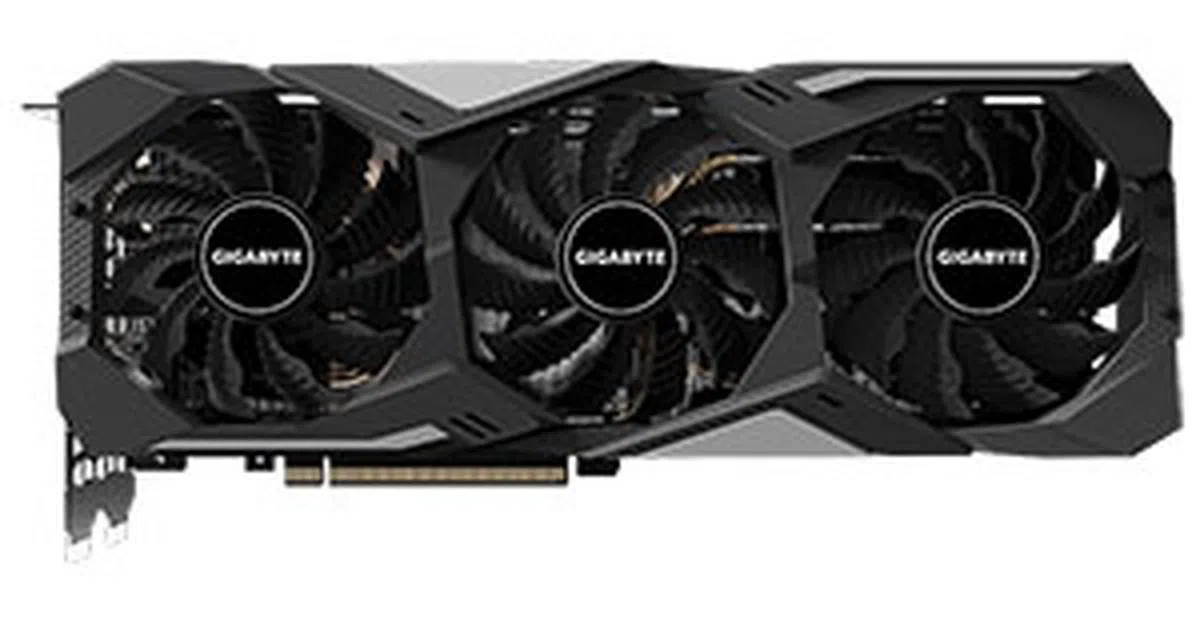 | |
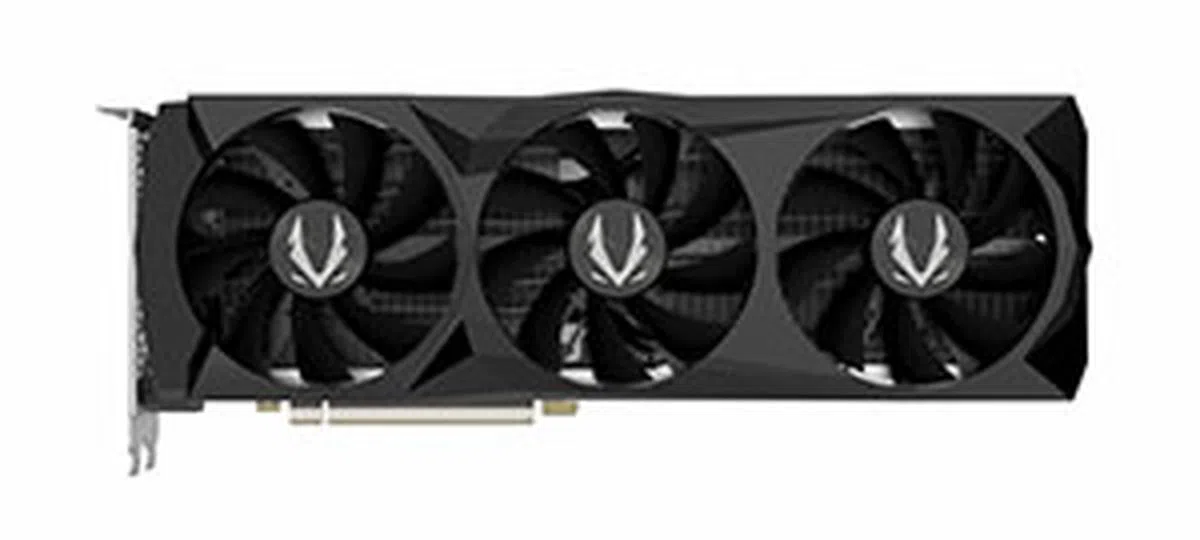 | |
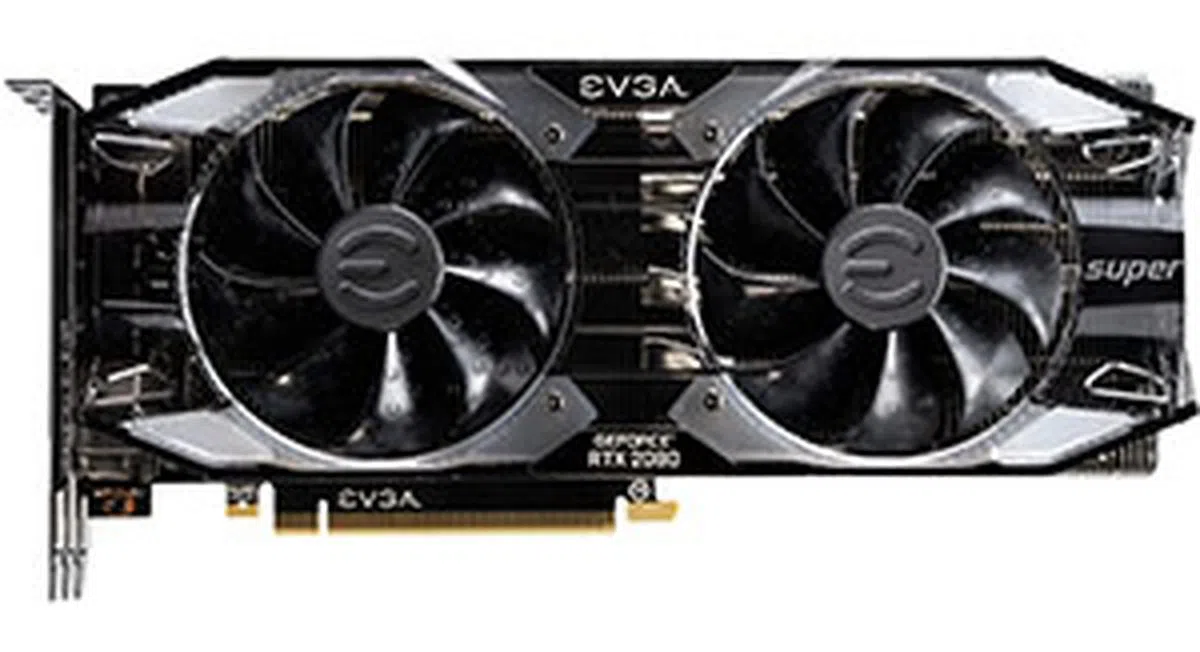 | |
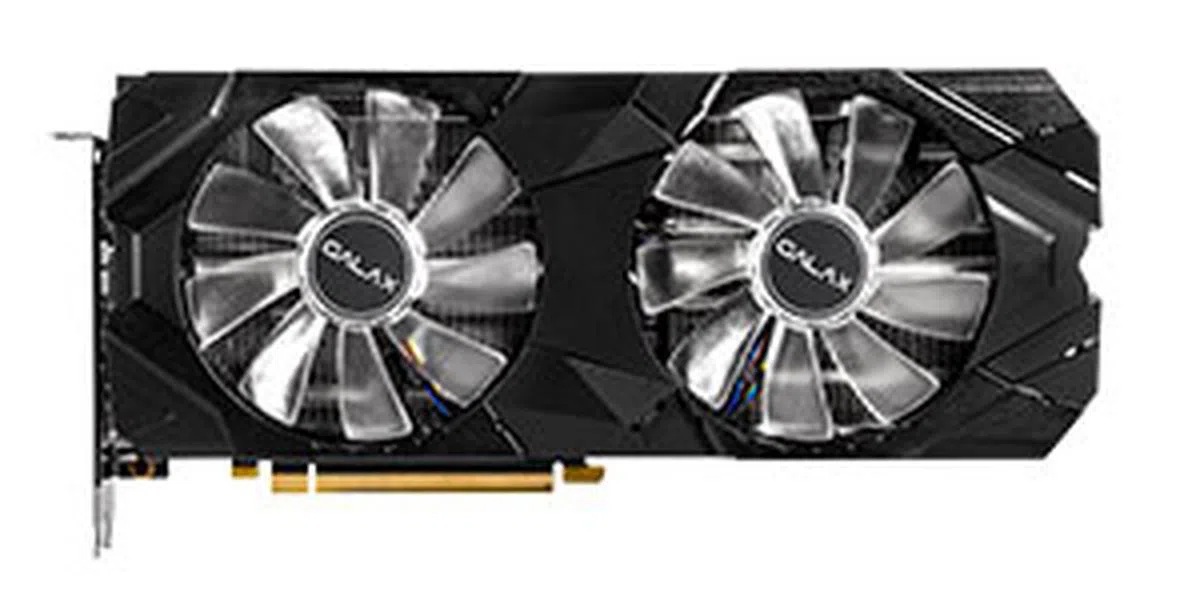 | |
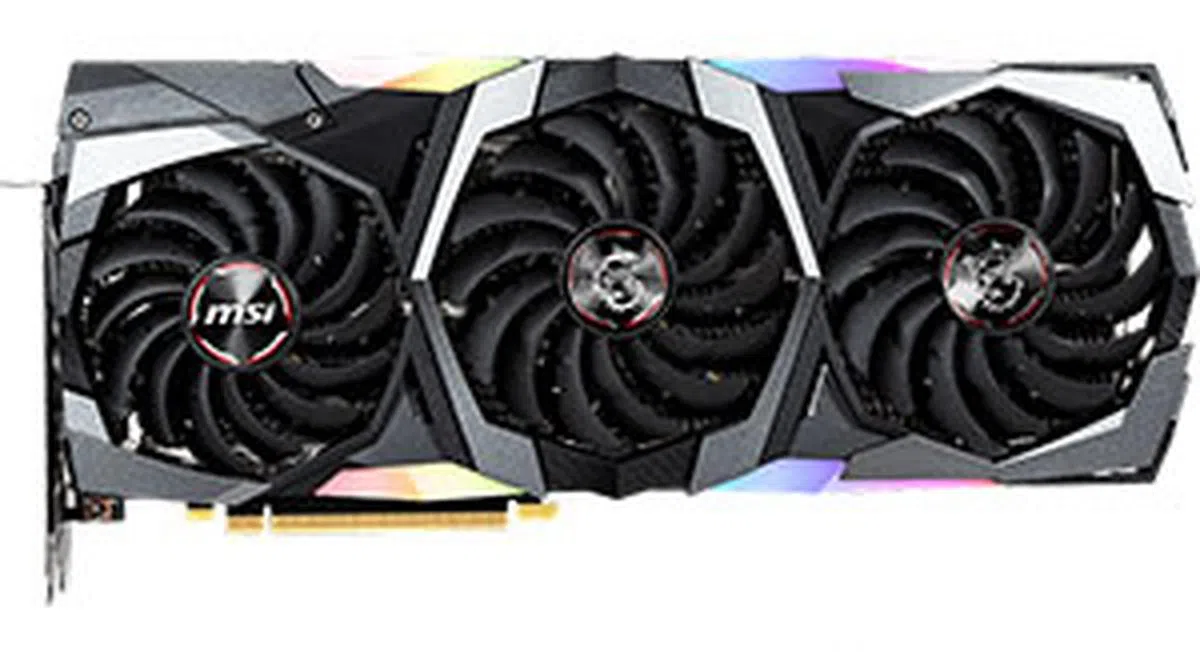 | |
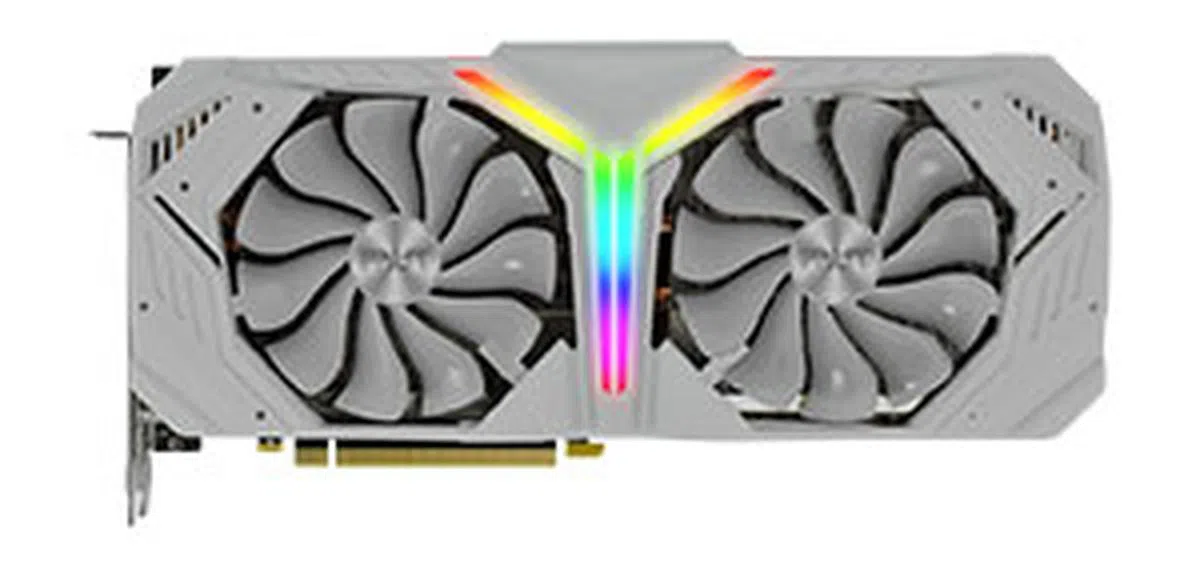 |
